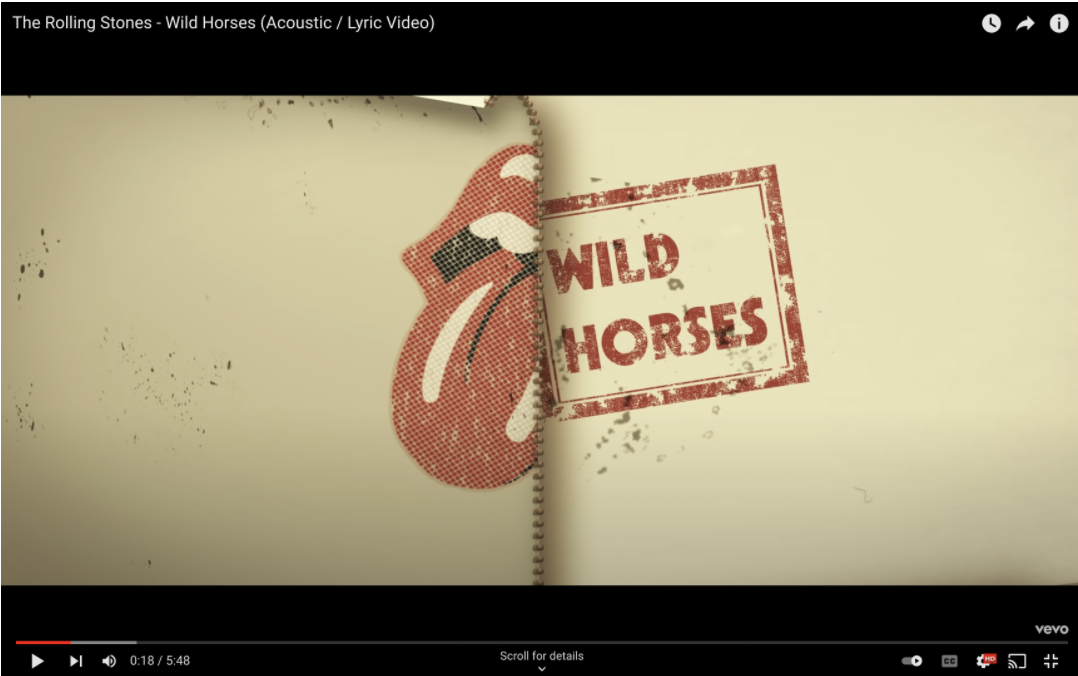Teach This Poem, though developed with a classroom in mind, can be easily adapted for remote-learning, hybrid-learning models, or in-person classes. Please see our suggestions for how to adapt this lesson for remote or blended learning. We have also noted suggestions when applicable and will continue to add to these suggestions online.
The following activities and questions are designed to help your students use their noticing skills to move through the poem and develop their thinking about its meaning with confidence, using what they’ve noticed as evidence for their interpretations. Read more about the framework upon which these activities are based.
-
Warm-up: Watch the lyric video of the song “Wild Horses” by the Rolling Stones. What lyrics, phrases, or visuals stand out? Why?
-
Before Reading the Poem: (Teachers, choose several of these resources to display around the room in a gallery-walk.) As you view the gallery-walk images, stop and jot down what you notice or write any questions that come up. Then, with a partner or a small group, discuss one image.
-
Reading the Poem: Silently read the poem “Wild Horses” by Paisley Rekdal. What do you notice about the poem? Annotate any words or phrases that stand out to you or any questions you might have.
-
Listening to the Poem (enlist two volunteers to read the poem aloud): Listen as the poem is read aloud twice, and write down any additional words and phrases that stand out to you.
-
Small-group Discussion: Share what you noticed in the poem with a small group of students. Based on the details you just shared with your small group and the resources you discussed at the beginning of class, how does this poem connect to freedom and/or the right to vote?
-
Whole-class Discussion: (Teachers, if your students need more context, information about Seraph Young Ford can be found here, or you might want to partner with a history teacher. More information about persona poetry is listed here.) In what ways is this a persona poem? How would you describe the speaker in the poem? Why? What is the significance of the “wild horses”? In your opinion, what is the importance of voting?
-
Extension for Grades 7-8: Read more about the women’s suffrage movement and Women’s History Month. Create a poem, song, visual art piece, etc. that celebrates a famous woman of your choice.
-
Extension for Grades 9-12: What else do you want to know about women’s suffrage or women’s rights? To celebrate Women’s History Month, create your own research project, where you research a contemporary figure. Present your research to your class.
“Project 19 is the New York Philharmonic's multi-season initiative to commission and premiere new works by 19 women composers, from Pulitzer Prize winners to emerging talents, to mark the centennial of the passage of the 19th Amendment.” Read more about Project 19 and the poems written for the project.
This week’s poetic term is quatrain: a four-line stanza or grouping of four lines of verse. Read more poetry terms.

